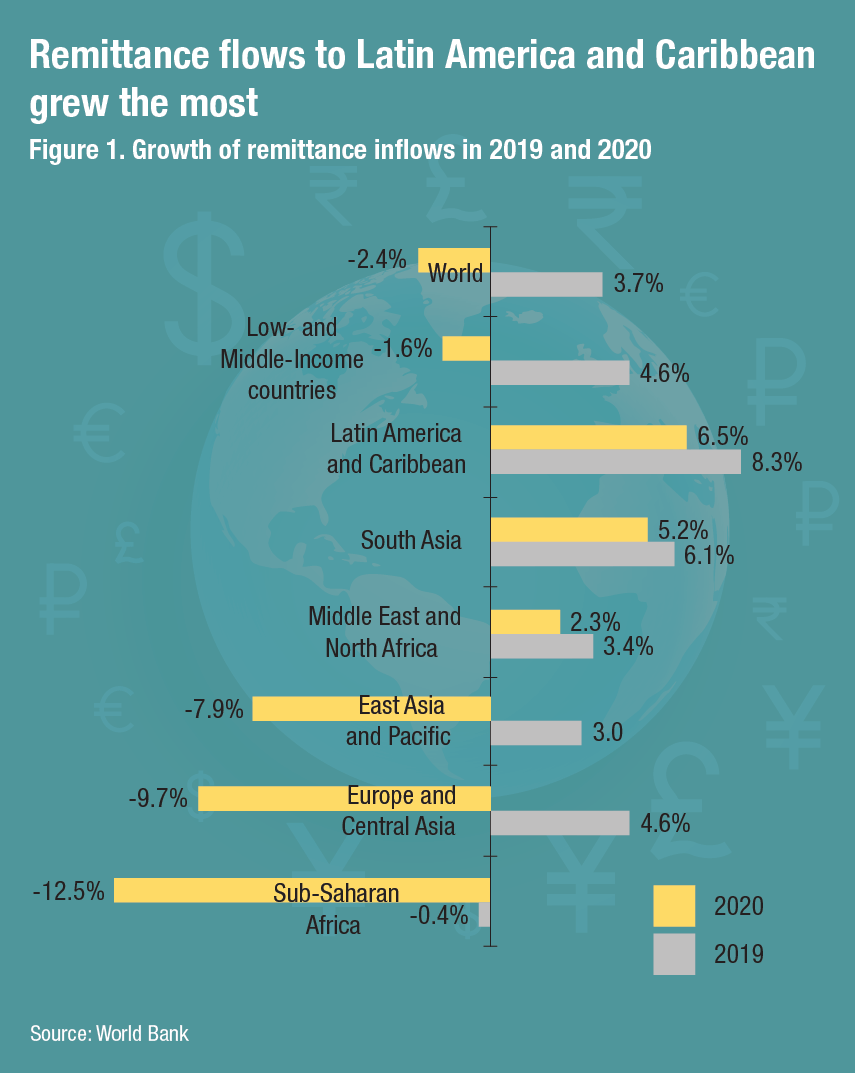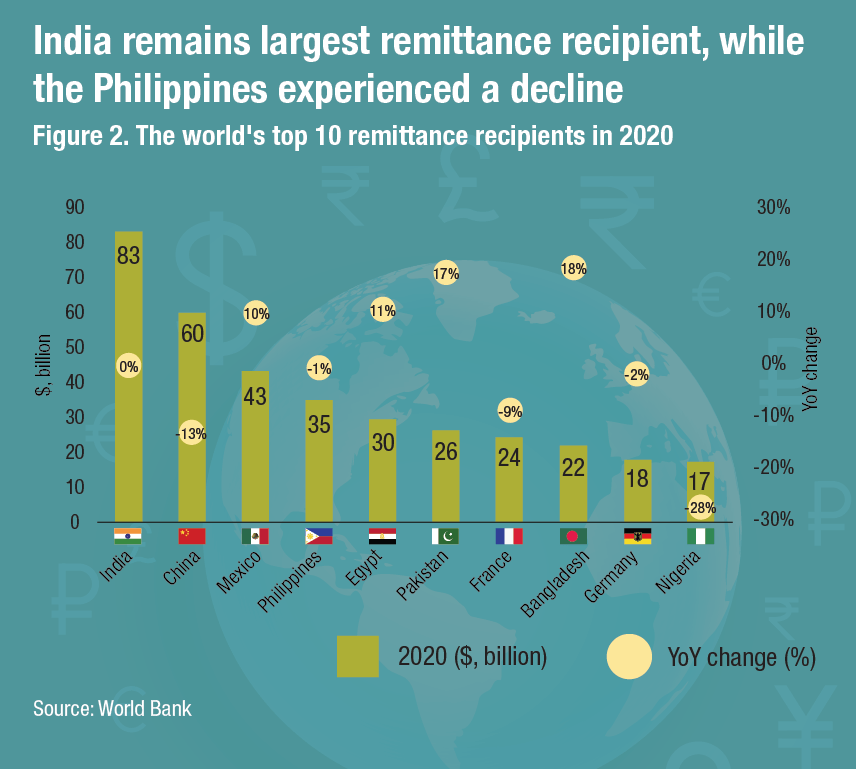- Various government programmes in host countries supported affected businesses and migrant workers
- The use of formal channels and digital channels for remittance transfer increased
- India has remained the largest remittances recipient, while the Philippines experienced a decline in remittance inflows
The officially recorded global remittances reached $702 billion in 2020, a drop of 2.4% from $719 billion in 2019, according to the World Bank's Migration and Development Brief released in May 2021. The decline was much smaller than previous predictions. In April 2020, the World Bank predicted a 20% decline in global remittances because of the economic crisis caused by the pandemic which negatively impacted wages and employment of migrant workers. In October 2020, it adjusted its estimates to a 14% drop.
“The resilience of remittance flows is remarkable. Remittances are helping to meet families’ increased need for livelihood support,” said Dilip Ratha, lead author of the report. The remittances are lower than the true amount of flows which also includes informal flows. The World Bank has called for better collection of data on remittances.
Main drivers of remittance flows
Governments in many host countries introduced measures to bolster the economy which resulted in better-than-expected economic conditions. A variety of government programmes provided support to affected businesses and cushioned a decline in the wages and employment of migrant workers. Meanwhile, some countries also adopted measures to encourage migrants to remit money home.
In addition, the resilience of remittances was also supported by greater use of formal channels to transfer remittances. Apart from a broad shift from informal to formal channels, digital channels also gained popularity in 2020. These were driven in part by the lockdowns and widespread travel restrictions. Money transfer service providers registered significant growth in their digital remittance business.
Regional remittance trends
Among regions, the growth of inward remittance flows into Latin America and Caribbean was the strongest at an estimated 6.5% in 2020. This can be largely attributed to the moderate improvement in the US labour market. The 11% increase in flows to Mexico was also due to a sharp depreciation of the peso against the US dollar since March 2020. Meanwhile, remittance flows to South Asia rose by 5.2% in 2020, supported by the strong growth of flows to Bangladesh and Pakistan.

In contrast, remittance flows to Sub Saharan Africa fell by 12.5% in 2020. Remittance to Nigeria, which accounts for over 40% of flows to the region, dropped by 28% in 2020, while flows to other countries in the region went up by 2.3%. The region continued to have the highest remittance costs, averaging 8.2% in 2020. Flows to Europe and Central Asia also declined by 9.7%. In addition to the pandemic, the weak oil prices and the depreciation of the Russian ruble also significantly affected flows to the region.
Top remittance recipients
When measured in current US dollars, the top remittance recipient country was India with $83 billion, followed by China ($60 billion), Mexico ($40 billion) and the Philippines ($35 billion). Remittances to India declined by 0.2% in 2020, mainly driven by the 17% drop in remittances from the UAE. Flows to the Philippines also fell slightly in 2020, ending 19 consecutive year-on-year gains, according to Bangko Sentral ng Pilipinas (BSP), the country’s central bank. The country experienced a drop in remittances from countries such as Saudi Arabia, Japan, the United Kingdom, United Arab Emirates, Germany, and Kuwait.

Pakistan and Bangladesh posted 17% and 18% growth, respectively. The growth of remittance flows to Pakistan was mainly from Saudi Arabia, the European Union countries and the UAE. One of the measures that Pakistan introduced to motivate migrants to send money home is the lowering of the threshold for eligible transactions for cash rebates from $200 to $100 under the Reimbursement of Telegraphic Transfer Charges Scheme.
Despite the impact of the pandemic, global remittances will gradually recover in 2021 and 2022. The economy is rebounding and more than 2.15 billion doses of COVID-19 vaccines have been administered. In 2021, remittance flows to countries such as India are expected to grow due to increased demand for funds amid the surge in COVID-19 cases.




All Comments